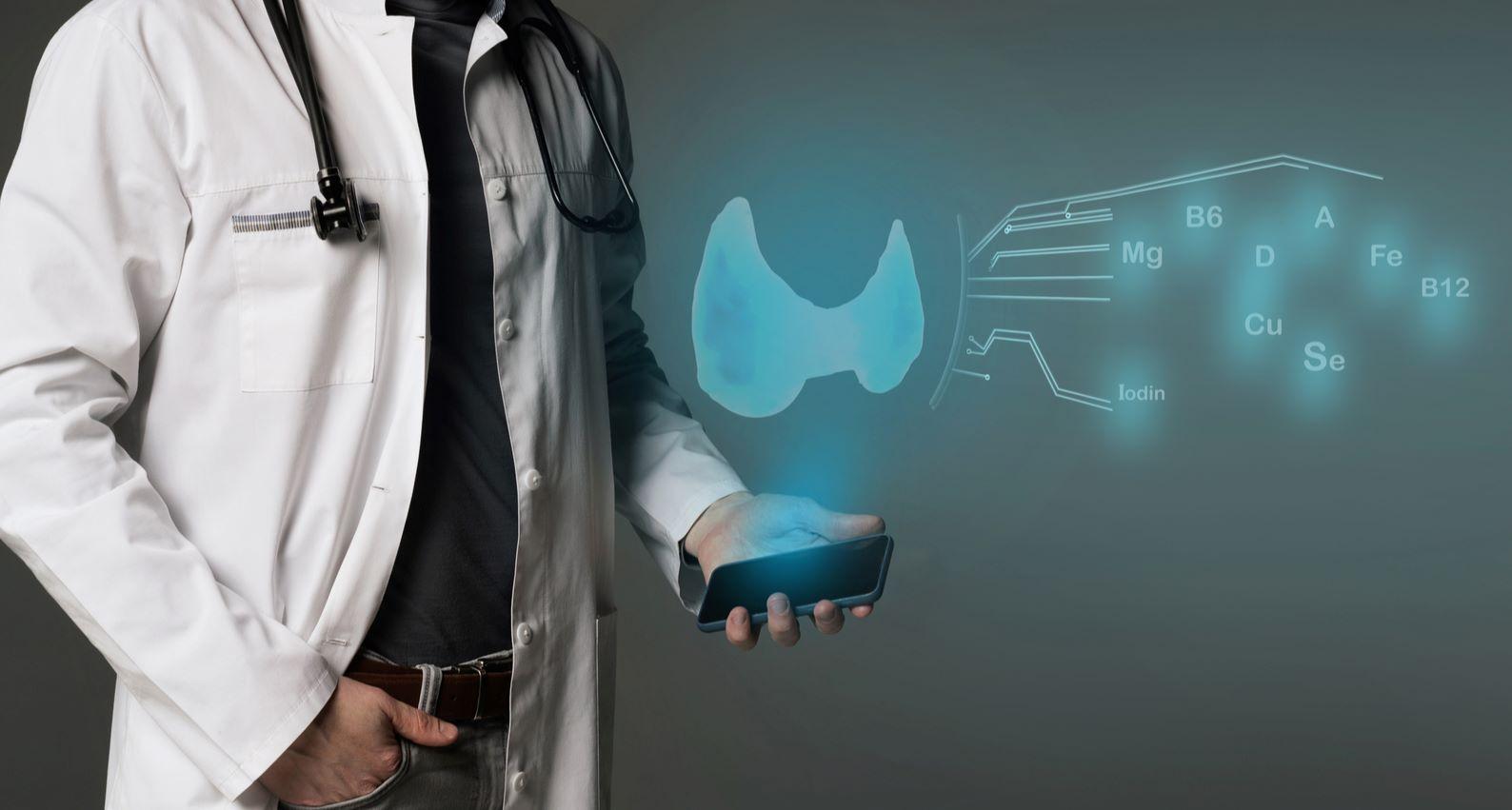Technologies to Detect Thyroid Disorder
Published on 26 May, 2022

Hormonal imbalance due to thyroid dysfunction can lead to various health issues for both men and women. Quick and accurate diagnosis of this imbalance aids in early prognosis, treatment, and health management. There are many new-age detection devices as well as sensor technologies that can help in accurate assessment of this imbalance and aid caregivers in providing the right treatment.
Thyroid is a butterfly-shaped, ductless, endocrine gland located at the neck, with its cartilage extending to form the Adam's apple. Hormones such as T3 (triiodothyronine), T4 (thyroxine), and calcitonin secreted by the thyroid have a major impact on health, affecting metabolism, heart rate, body temperature, and blood pressure as well as leading to mood fluctuations. By influencing the metabolism, it regulates growth and development. Thyroid problems can aggravate from a harmless goiter or an enlarged thyroid gland to life-threatening thyroid cancer. If the thyroid gland malfunctions, it secretes too much or too little hormones, both of which is not good for health.
Hyperthyroidism
If the body’s thyroid gland is overactive and secretes excessive hormones, it can result in hyperthyroidism. This condition can be caused by an auto-immune disease known as Graves’ disease or due to inflammation of the thyroid glands.
Hypothyroidism
If the thyroid is underactive and secretes very little hormones, it can lead to hypothyroidism. One of its leading causes is the auto-immune condition called Hashimoto’s disease. It slows down the body’s functions, including metabolism, and creates health issues such as obesity. Hypothyroidism could also cause heavy menstrual cycles in women. If not treated in time, hypothyroidism can lead to heart trouble and decreased mental and cognitive functions.

There are other conditions that can impact the function of the thyroid, such as toxic adenomas or thyroid nodules (excess hormone secretion leading to chemical imbalance in the body), goiters, thyroiditis, thyroid swelling, and thyroid tumors as well as high exposure to lithium or iodide. A thyroid stimulating hormone (TSH) secreted by the pituitary gland regulates the function of the thyroid gland and the secretion of its hormones. Hence, a malfunctioning pituitary gland can also affect thyroid functions.

Thyroid hormone sensing technologies
Technological advancement has led to the launch of many modern devices that can assist in early detection of thyroid imbalance. These devices are classified under the category of non-invasive, minimally invasive, and invasive.
Non-invasive detection methods
Today’s digital natives are taking charge of their health and wellness. Non-invasive devices that are easy to use is well-suited for them. There are a few non-invasive quick check devices to track thyroid levels:
- GE Vscan Air – This diagnostic ultrasound system has a dual probe technology that allows imaging of superficial and deeper parts of the body. It can be paired with an Android or iOS device via Bluetooth to display images in real-time. It is an ideal device for thyroid sonography and helps in early disease detection. The system is also compact, mobile, and robust.
- Apple watch - As the Apple watch has the functionality to check heart rate, it serves as a smart non-invasive device to track thyroid. Since both hyperthyroidism and hypothyroidism cause heartbeat fluctuation, the watch can help track this symptom and warn the patient early on.
- Smartphone apps
- iOS app - Researchers from the University of Utah have developed a handy device that uses the iPhone’s LED flash and digital camera with collimating lens to optimize illumination and focusing. The app collects an image of a completed TSH assay to convert the image into quantitative values and check for hypothyroidism.
- Scientists at the University of California have developed an app that uses the near-infrared camera of a smartphone and tracks any changes in the eye to detect various diseases. Bulging or protruding eyes can be a sign of malfunctioning thyroid glands.
- Thyroid-SPOT is a mobile application that helps to assess thyroid function tests and laboratory reports. The app uses the Thyroid-SPOT algorithm to compute and analyze the thyroid parameters for treatment.
- BOOST Thyroid is used for Hashimoto’s and hypothyroid management.
Android apps-
Minimally invasive detection methods
Apart from the futuristic non-invasive devices, there are also some commercial, minimally invasive test kits that can help to detect and track thyroid levels.

Invasive methods to detect thyroid imbalance include blood test and biopsy. The results of these tests are highly accurate and can help administer the correct treatment.
Thyroid symptoms are fairly common and therefore it is difficult to detect the disease. Hence, there is a need for developing new-age detection devices that are reliable and easy to use for monitoring thyroid levels. Since thyroid is associated with many chronic disorders and affects crucial bodily functions, it is essential to monitor and start treatment on time.

